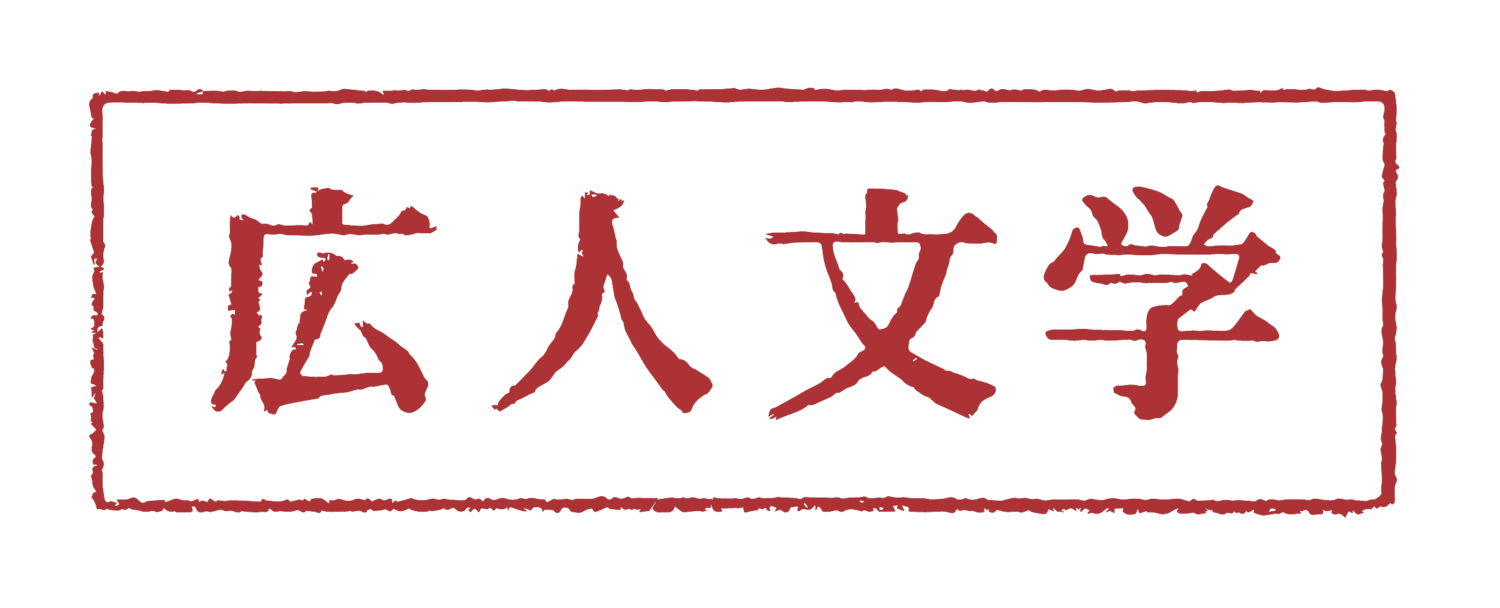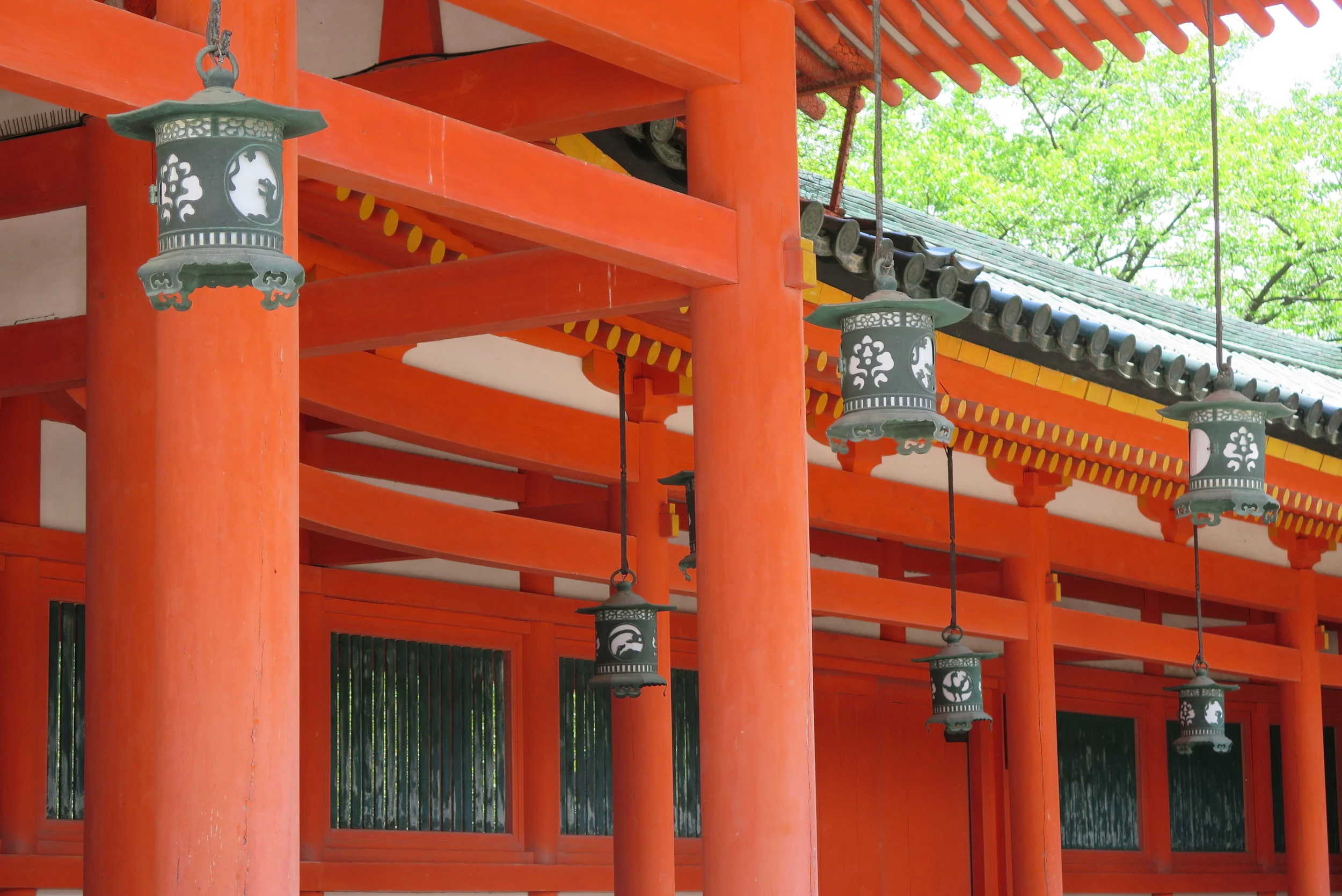At IMashirozuka burial mound for NHK world
Heian JINGū in 1895
Detail of Kawai Senrō’s Daiyonkai naikoku kangyō hakurankai oyobi Heian jingū daigokuden no zu, Personal collection
Contact Information
Office: East Zone B-506
vgoethem@lit.kyushu-u.ac.jp
Ellen Van Goethem is Professor of Japanese History and History of Ideas. She holds a Ph.D. in Oriental Languages and Cultures from Ghent University (2005). After having taught at Ghent University (1999–2006) and Hosei University (2008–2011), she joined Kyushu University in 2011 to establish the IMAP in Japanese Humanities together with historian Jeff Kurashige and linguist Carey Benom and served as the program’s chair and co-chair until her sabbatical in 2018–2019. In 2015, she co-founded the Journal of Asian Humanities at Kyushu University (JAH-Q); the first volume was published in March 2016.
Van Goethem specializes in the history and archaeology of the Asuka, Nara, and early Heian periods. Her primary focus is on Kanmu Tennō (r. 781–806), on the layout of Japan’s ancient capital cities (kyūto), and on inscribed wooden tablets (mokkan). She has also published on site divination (geomancy, fengshui, shijin sōō) in premodern East Asia and on the influence of fengshui thought on contemporary Japanese architecture. Her current research, an institutional and social history of Heian Jingū, builds upon her earlier work. In this project, she investigates issues related to the reconstruction of long-lost buildings, the deification of emperors, the presence of Chinese cosmological symbolism in Shinto shrines, and changes in perceptions of Heian Jingū since its founding in the late nineteenth century.
Van Goethem teaches courses in premodern Japanese history, archaeology, material culture, religious practices and beliefs; research methods and digital humanities; and East-West encounters. She is currently one of ten trainees in the 4th round of Kyushu University's SENTAN-Q Diversity and Super Global Training Program for Female and Young Faculty (https://sentan-q.kyushu-u.ac.jp/en/trainee/)
Publications
Monograph
Nagaoka, Japan’s Forgotten Capital (Brill Academic Publishers, 2008).
Articles and Chapters (select)
時代祭の起源―禍転じて福となす [The Origin of Jidai Matsuri: Turning Misfortune into Luck], Tosho 図書, October 2023, 22–24.
宮都の敷地選定と風水 [The Site Selection Process of Chinese-style Capitals and Fengshui], in Nihon no tojō to higashi ajia 日本の都城と東アジア [Japanese Cities and East Asia] (Hanoi: Vietnam National University/Japan Foundation, 2022), 57–70, 91–112.
‘Animated City: Life Force, Guardians, and Contemporary Architecture in Kyoto,’ in Fabio Rambelli, ed. Spirits and Animism in Contemporary Japan: The Invisible Empire (Bloomsbury, 2019), 81–94.
‘Heian Jingū: Monument or Shintō Shrine?,’ Journal of Religion in Japan 7:1 (2018): 1–26.
‘Of Trees and Beasts: Site Selection in Premodern East Asia,’ Journal of Asian Humanities at Kyushu University (JAH-Q) 1 (2016): 1–7.
‘Interroger le paysage: À la recherche des quatre divinités protégeant les capitales japonaises de style chinois,’ in Benoit Jacquet, Philippe Bonnin and Masatsugu Nishida, eds., Dispositifs et notions de la spatialité japonaise (Presses Polytechniques Universitaires Romandes, 2014), 81–100.
‘The Four Directional Animals in East Asia: A Comparative Analysis,’ in Florian Reiter, ed., Feng Shui (Kan Yu) and Architecture (Humboldt-Universität zu Berlin, 2011), 201–16.
Recent Invited Lectures and Conference Papers
‘The Hands That Build a Temple: Artisans and Laborers in Ancient Japan,’ University of California, Santa Barbara (online), March 4, 2025
‘(Re)Imaginings of the Heian, Nara, and Shuri Palaces in the Late Nineteenth and Early Twentieth Centuries,’ Nichibunken, December 7, 2024
‘The Hands that Build a Temple: Construction Workers in Eighth-Century Japan,’ École Pratique des Hautes Études, Section of Religious Sciences, May 31, 2024
‘Vanished and Resurrected: The Reconstruction of the Heian, Shuri, and Nara Palaces in the Modern Era,’ University of Naples, May 24, 2024
‘The History of Hasedera and its Eleven-Headed Kannon,’ St Peter Mancroft, Norwich, organized by the Sainsbury Institute for the Study of Japanese Arts and Cultures, May 20, 2024
‘Building for the Sovereign and the Buddha: Artisans and Labourers in Eighth-Century Japan,’ Third Thursday Lecture series, Sainsbury Institute for the Study of Japanese Arts and Cultures (online), May 16, 2024
‘Temple Construction in Eighth-Century Japan: Building for the Buddha or Building for the Sovereign?,’ Ghent University, May 8, 2024
‘The Construction of Temples and Government Buildings in the Eighth Century / 8世紀における仏教寺院と政府関係建築の建設,’ Ryūkoku University, December 22, 2023
‘Trees and Beasts: Auspicious Architecture and Urban Planning in Japan, Past and Present,’ SOAS, November 21, 2023
‘Chinese Fengshui and Japanese Shinto Shrines? Trajectories, Transformations, and Transmutations of Architectural Ideas,’ Vienna University, November 16, 2023
‘Chinese Mythical Beasts in Japanese Shinto Shrines?,’ Ghent University, November 15, 2023
‘Trees and Beasts: Auspicious Architecture and Urban Planning in East Asia, Past and Present,’ Ghent University, November 8, 2023
‘Temple Construction in Eighth-Century Japan: Building for the Buddha or Building for the Sovereign?,’ University of California, Santa Barbara, October 31, 202
‘Revival and Reconstruction: From Ritual Space to Monument and Back Again,’ University of California, Santa Barbara, October 30, 2023
Grants (select)
Heian Jingū and Jidai Matsuri: Changing Meanings and Perceptions from Their Creation to the Present (AY2024–2029), JSPS/KAKENHI 日本学術振興会科学研究費補助金 (Japan Society for the Promotion of Science Grants-in-Aid for Scientific Research) 基盤硏究 C (Grant-in-Aid for Scientific Research C), grant no. 24K03398
Reiterations of the Past: Reconstructions, Practices, and Places (AY2019–2021), 世界トップレベル研究者招へいプログラム「Progress 100」戦略的パートナーシップ構築型 [Kyushu University’s World Premier International Researcher Invitation Program (Progress 100), Strategic Partnership Acceleration Grant]
Kyushu U. IMAP/IDOC & Ghent U. Japanese Studies/BOCULT Network (AY2020), Kyushu University SHARE-Q (Strategic Hub Area for top-global Research and Education) Webinar 100 grant
Heian Jingu: The Creation of a New Shrine (AY2017–2019), QR プログラムつばさプロジェクト [Kyushu University Jump Research Program, Tsubasa Project], collaborators: Yuki Katō (Kyushu University) and Alice Tseng (Boston University)
Site Divination Practices in Premodern East Asia (AY2015–2019), JSPS/KAKENHI 日本学術振興会科学研究費補助金 (Japan Society for the Promotion of Science Grants-in-Aid for Scientific Research) 若手研究 A (Grant for Young Researchers A), grant no. 15H05376
日本古代・中世の敷地選定 [Site Selection in Ancient and Medieval Japan] (AY2011–2014), JSPS/KAKENHI 日本学術振興会科学研究費補助金 (Japan Society for the Promotion of Science Grants-in-Aid for Scientific Research) 若手研究A (Grant for Young Researchers A), grant no. 23682001
Fellowships (select)
Visiting Fellow, East Asia Center, University of California, Santa Barbara (2018–2019)
Japan Foundation Japanese Studies Fellowship, Ritsumeikan University (2007–2008)
Canon Foundation in Europe Fellowship, Ritsumeikan University (2006–2007)
Media Activities
NHK World-Japan “History Uncovered: A Message in Clay”
https://www3.nhk.or.jp/nhkworld/en/shows/3022068/
NHK World-Japan “History Uncovered: The Secrets of Kyoto - Thousand-Year Capital”
https://www3.nhk.or.jp/nhkworld/en/shows/3022063/
Translations (select, all with Thomas Daniell)
Igarashi Taro and Yamazaki Ryo, Architecture since 3.11: New Relationships between Society and Architects, Gakugei Shuppansha, 2014.
Rem Koolhaas, Hans-Ulrich Obrist, and Kayoko Ota, eds. Project Japan: Metabolism Talks, Taschen America, 2011.
Kaya Oku,The Architecture of Gerrit Th. Rietveld, Toto Shuppan, 2009.
Tadao Ando, Tadao Ando, 4 vols., Toto Shuppan, 2007–2010.
Keiichiro Sako and Hironori Matsubara, Realize: Emerging from China to the World 立脚中国展開世界, Gallery Ma, 2007.
Honeycomb Tube Architecture, Japan Architect, 2007.
PhD Students
Alexander Evans, “Assembling Dazaifu: Society, Politics, and Space in a Gate-Front Town during the Bakumatsu Period”
Takuro Kikkawa, “The History of Budō (武道): Its Ethical, Religious, Intellectual and Aesthetic Evaluation in Transition”
Jacob Ritari, “英傑 Eiketsu: The Making of Bakumatsu Heroes”
Courses Taught (select)
Japan: A History to 1600
Religious Practices and Beliefs in Ancient Japan
State and Authority in Ancient Japan
History and Archaeology of Tōdaiji Temple
Experiencing Kyushu History and Culture in Situ
From Jōmon to Heian: (Why) Does It Matter Today?
World History since the 13th Century
Links
https://kyushu-u.pure.elsevier.com/en/persons/ellen-van-goethem
http://hyoka.ofc.kyushu-u.ac.jp/search/details/K004007/e
https://www.kyushu-u.ac.jp/ja/university/professor/vangoethem.html



